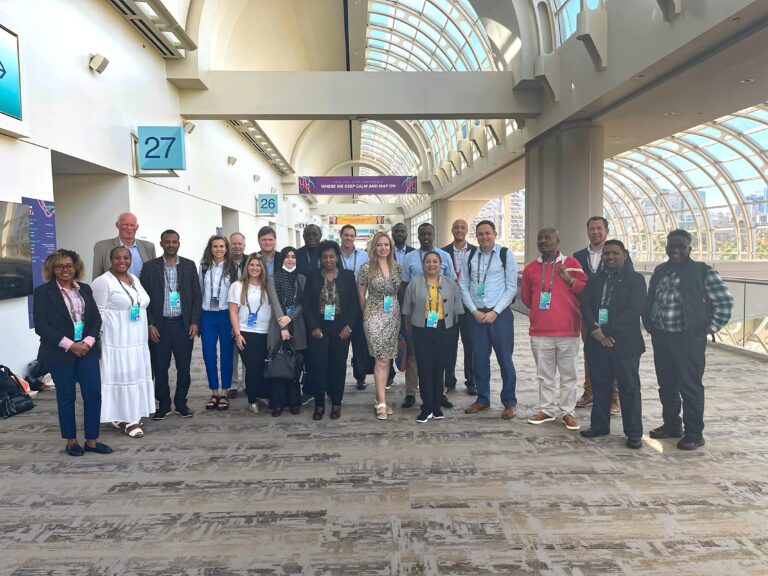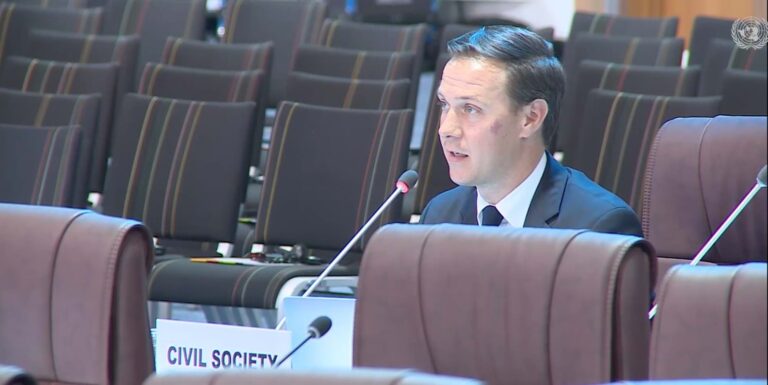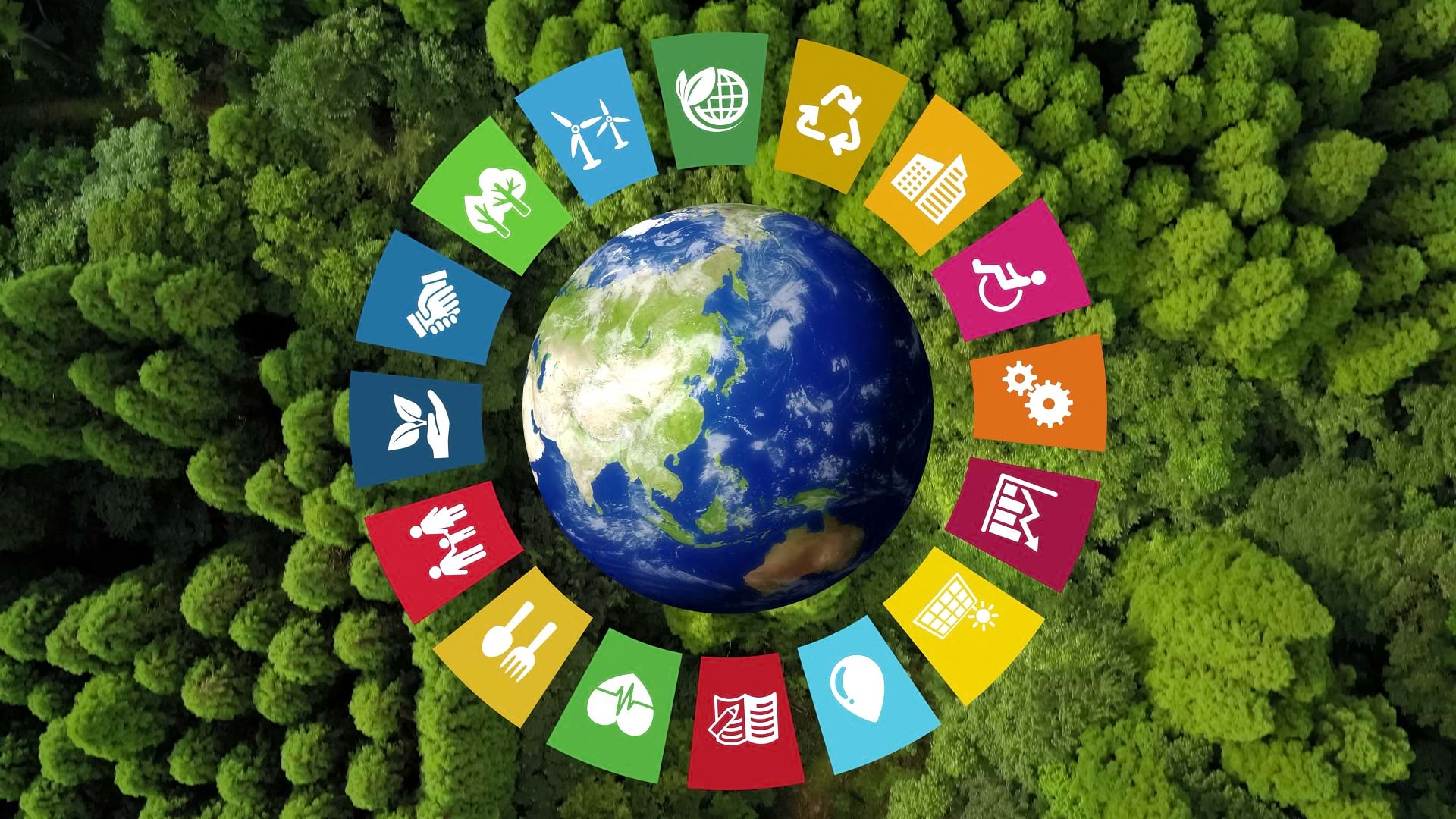In 2015, the United Nations (UN) General Assembly established 17 interlinked objectives to foster peace, promote prosperity, and create a more equitable world by 2030. These Sustainable Development Goals (SDGs) include eliminating poverty, improving access to clean water and sanitation, and reducing global inequality.
It’s an ambitious initiative, but baked into the SDGs is the idea that collaboration provides the best hope of creating a more sustainable world. The final goal asks participants to “strengthen the means of implementation and revitalize the global partnership for sustainable development.” This is not only a call for countries to align policies to achieve other SDGs, but also an appeal to private industry and nonprofit organizations to join those countries in their efforts to attain these goals.
That’s exactly what the SDG Data Alliance set out to do when it was launched at the United Nations High-Level Political Forum on Sustainable Development in July 2021. As an open, community-driven partnership, the alliance aims to expand and accelerate ongoing efforts to meet the SDGs by sharing geospatial technology and capabilities, especially with developing nations. Its members—PVBLIC Foundation, Esri, W.K. Kellogg Foundation, the United Nations Global Geospatial Information Management (UN-GGIM) Secretariat, and the Chia Network as contributing partner—are working to help countries and organizations around the world achieve SDGs by using statistical and geospatial data.

Esri has long supported global and local initiatives to meet the SDGs, whether through community-based organizations or humanitarian groups like Direct Relief. Using a wide variety of ArcGIS tools and other Esri resources, organizations and governments can collect, share, and use data to address these goals in actionable and scalable ways. Key to this mission—and the mission of the Data Alliance as a whole—are SDG Data Hubs.
The Framework
SDG Data Hubs are platforms created with ArcGIS Hub that are designed to support reporting and monitoring progress in tackling the SDGs. The SDG Data Hubs program has been spearheaded by PVBLIC Foundation, a nonprofit that aims to advance sustainable development and social impact programs worldwide by managing partnerships with a focus on media, data, and technology.
“Our work is grounded in the recognition that reducing inequalities of all kinds is fundamental to achieving all SDGs,” said Stephen Keppel, president of PVBLIC Foundation. “We want to create a just, healthy, and prosperous world where no one is left behind and everyone can thrive. Our technology, expertise, and financial support enable countries to more precisely allocate resources to address all forms of inequity.”
The SDG Data Hubs initiative first began a few years prior to the inception of the SDG Data Alliance. In 2018, the United Nations launched the Open SDG Data Hub, a global collection of authoritative SDG data sources that can be used for evidence-based decision-making and advocacy, including statistics on extreme poverty, access to clean fuel, and maternal mortality worldwide.
A crucial resource in its own right, the Open SDG Data Hub also laid the foundation for the development of a network of hub sites to support local initiatives in the effort to achieve the SDGs.
By collecting and visualizing localized geographic data, these local SDG Data Hubs enable organizations and national governments to better understand and track their progress toward SDGs, paying particular attention to diversity, equity, and inclusion. They also allow countries to determine where inequalities are located geographically within their regions, cities, and neighborhoods.
As a starting point, Esri Professional Services used ArcGIS Enterprise to create an SDG Data Hub template. The template is used by countries and organizations throughout the world as a foundation to build their own hub sites. Professional Services also assists in identifying existing data that can be applied to measure progress towards SDGs—which is then included in local SDG Data Hubs.

Keppel cited the United States Agency for International Development (USAID) Demographic and Health Surveys Program as an example of how preexisting data can be incorporated. “We developed a method to match [USAID’s] datasets with a country’s goals and the SDGs,” he said. “We have already begun integrating datasets from the many national governments, multilateral agencies, and UN agencies.”
PVBLIC Foundation and Esri Professional Services also work to train data alliance participants on the use of ArcGIS Hub, giving them tools to supplement the SDG Data Hub template.
What’s Next?
Several fully realized SDG Data Hubs have been built using this template, including hub sites for Haiti, the Philippines, and Guam. The University of Minnesota took a unique approach with its “hub of hubs,” designed to share and access data tied to specific locations across the state, as well as track statewide sustainability milestones.
“We expect countries to progress significantly this year with their implementation of the United Nations Integrated Geospatial Information Framework process,” said Keppel. “Soon, they will be updating, managing, and adding additional data to their SDG Data Hubs.”
More SDG Data Hubs are on the way. The Data Alliance has created beta versions for Burkina Faso, Chile, Tonga, and many other countries that are in the process of building localized hub sites to track sustainable development measures and targets.
But the SDG Data Alliance isn’t stopping there—PVBLIC Foundation and the other members of the alliance are committed to expanding the reach of the SDG Data Hubs to encompass as many countries as possible, enabling participants to be able to visualize their progress and use this data to develop geographic, localized strategies for meeting the SDGs.
“We have just seven years to achieve the SDGs by 2030,” said Keppel. “So we will be focused on bringing more countries into the Data Alliance, creating new Data Hubs, and helping countries expand and deepen the reach and awareness of their own Data Hubs.”
Learn more about the SDG Data Alliance.
